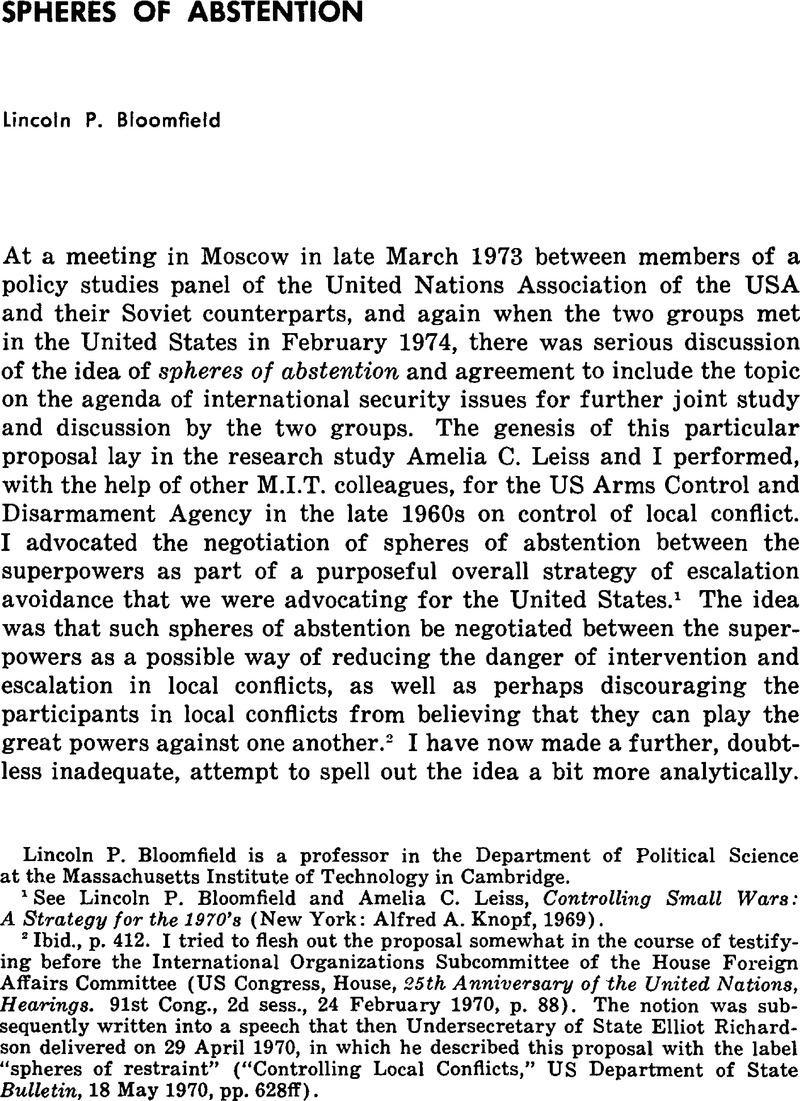No CrossRef data available.
Published online by Cambridge University Press: 22 May 2009

1 See Bloomfield, Lincoln P. and Leiss, Amelia C., Controlling Small Wars: A Strategy for the 1970's (New York: Alfred A. Knopf, 1969).Google Scholar
2 Ibid., p. 412. I tried to flesh out the proposal somewhat in the course of testifying before the International Organizations Subcommittee of the House Foreign Affairs Committee (US Congress, House, 25th Anniversary of the United Nations, Hearings. 91st Cong., 2d sess., 24 February 1970, p. 88). The notion was subsequently written into a speech that then Undersecretary of State Elliot Richardson delivered on 29 April 1970, in which he described this proposal with the label “spheres of restraint” (“Controlling Local Conflicts,” US Department of State Bulletin, 18 May 1970, pp. 628ff).
3 “Text of Basic Principles, May 29,” US Department of State Bulletin, 26 June 1972, p. 899.